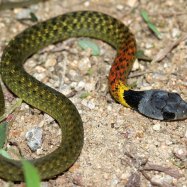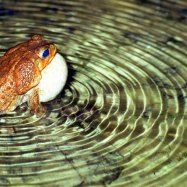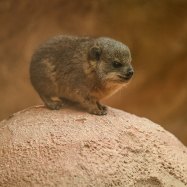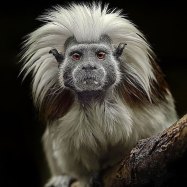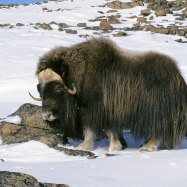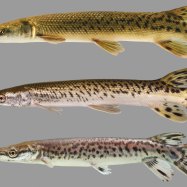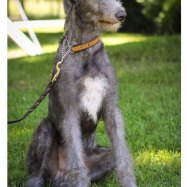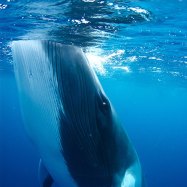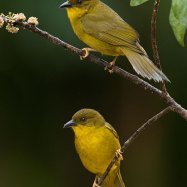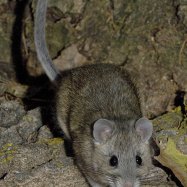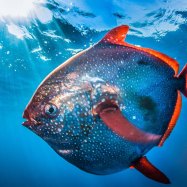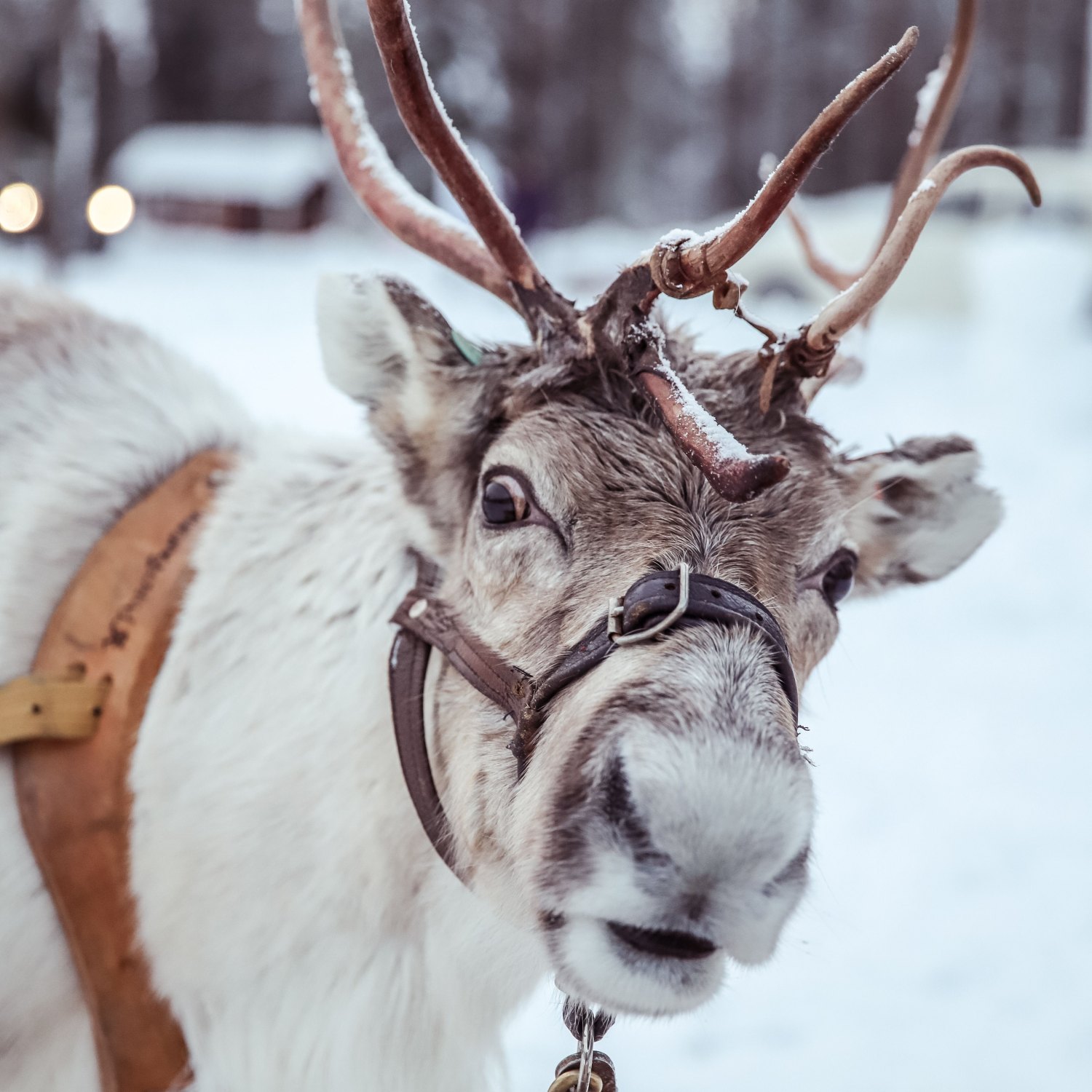
Reindeer
1.6 to 2.1 meters
Reindeer, a majestic animal found in North America, Europe, and Asia, belongs to the Cervidae family. Known for their stocky and compact body shape, they can grow to a length of 1.6 to 2.1 meters. These beautiful creatures are a symbol of the holiday season and play an essential role in the Arctic ecosystem. They are strong and resilient animals, capable of surviving harsh winters and long migrations. Spotting a reindeer in the wild is a truly magical experience.
Animal Details Summary:
Common Name: Reindeer
Kingdom: Animalia
Habitat: Tundra, Boreal Forests
The Majestic Reindeer: A Fascinating Arctic Creature
Deep in the Arctic and Subarctic regions, where the harsh cold and unforgiving climate make survival a constant struggle, roams a magnificent creature that has become a symbol of the holiday season – the reindeer. Known for their ability to thrive in extreme conditions, these animals have captured the imaginations and hearts of people all over the world.But beyond their association with Christmas and Santa's sleigh, reindeer are fascinating creatures with unique characteristics and habits. In this article, we'll delve into the world of reindeer, exploring their scientific classification, behavior, habitat, and more Reindeer.
The Scientific Name and Classification of Reindeer
Scientifically known as Rangifer tarandus, the reindeer belongs to the Animalia kingdom, the Chordata phylum, and the Mammalia class. They are part of the Artiodactyla order, which includes even-toed ungulates such as deer, cows, and camels. More specifically, reindeer fall under the Cervidae family, which also includes deer, moose, and elk.Reindeer share a similar taxonomy with another popular Arctic species – the caribou. In fact, the two animals are so closely related that some scientists consider them to be the same species, with the term "caribou" used to refer to the North American population and "reindeer" for the Eurasian population.
Appearance and Physical Characteristics
Reindeer are known for their distinctive antlers that are typically found on males (though some females can also have antlers). These antlers, which are shed and regrown every year, can reach up to 1.2 meters in width and are used for protection and dominance during mating season.In terms of color, reindeer have a brown coat in the summer, which helps them blend in with their surroundings and provides camouflage against predators Rainbow Kribs. As the temperatures drop and snow covers their habitat, their coat turns a grayish-brown color to provide better insulation and protection from the cold.
Reindeer have a stocky and compact body shape, with short legs and a relatively large head. This body structure helps them conserve heat and makes it easier for them to navigate through the snow-covered tundra.
On average, reindeer grow to be 1.6 to 2.1 meters in length and can weigh anywhere between 80 to 180 kilograms. Males tend to be larger and heavier than females, especially during breeding season when they need the extra weight for fighting other males.
Habitat and Geographical Distribution
Reindeer are found in the Arctic and Subarctic regions of North America, Europe, and Asia. Their habitat includes tundra, boreal forests, and other cold, open areas with abundant vegetation. Some populations of reindeer are also found in mountainous regions of Asia and Europe.Unlike many other animals, reindeer are well adapted to survive in extreme cold temperatures. Their coats provide insulation, and they have a layer of fat under their skin to keep them warm. In addition, their hooves are specially designed to help them navigate through icy and snowy terrain, providing them with stability and preventing them from sinking.
In the summer months, when the temperatures rise and the snow melts, reindeer migrate to higher elevations to find cooler and more comfortable conditions. By constantly moving and adapting to their environment, they are able to thrive in areas where other animals would struggle to survive.
Feeding Method and Diet
Being herbivores, reindeer primarily feed on plants and vegetation. In the summer, when their habitat is more accessible, they graze on a variety of grasses, sedges, and shrubs. In the colder months, when these food sources are scarce, they will use their hooves to dig through the snow to reach lichen and moss, their main sources of food in the winter.Interestingly, reindeer have two layers of teeth – a hard outer layer and a softer inner layer. This unique dental structure allows them to graze on tough, fibrous plant material in the summer and then switch to a softer, more easily digestible diet in the winter.
Social Behavior and Mating Habits
Reindeer are social animals, forming large herds of up to 500,000 individuals. These herds are generally led by a dominant male who is responsible for protecting the group and finding food and water sources.During breeding season, which occurs in the fall, male reindeer will engage in intense battles for dominance and mating rights. These fights can be dangerous, with antlers clashing and males using their strength to push each other.
Females give birth to a single calf in the summer, and unlike other deer species, reindeer do not have a specific mating season. Males will mate with multiple females, and the dominant male in a herd will have a higher chance of mating with more females.
The Role of Reindeer in Human Culture
Reindeer have been an essential part of human culture and livelihood for centuries, especially for indigenous peoples in the Arctic and Subarctic regions. They provide food, milk, and transportation, and their antlers and fur have been used for a variety of purposes, including clothing, tools, and decorations.In addition, the myth and legend surrounding reindeer have captured the imagination of people all over the world. The idea of Santa's sleigh being pulled by flying reindeer is a popular and beloved Christmas tradition, and in many Nordic and Indigenous cultures, reindeer play a significant role in folklore and religious beliefs.
The Conservation of Reindeer
While reindeer are not considered an endangered species, they face threats from human activities such as logging, mining, and oil and gas exploration, which destroy their natural habitat. Climate change also poses a significant threat to their survival, as the melting of sea ice and permafrost affects their food sources and migration patterns.Many governments and organizations are working towards preserving reindeer populations and their habitat. Steps such as regulating hunting and implementing conservation practices have been taken to ensure the long-term survival of these majestic creatures. In addition, scientists are continuously studying reindeer and their behavior to better understand how they will adapt to a changing climate.
In Conclusion
In conclusion, the reindeer is a fascinating animal that has captured our hearts and imaginations for centuries. From their unique physical characteristics to their ability to thrive in extreme conditions, these animals are truly remarkable.But beyond their association with Christmas, reindeer play a crucial role in the Arctic ecosystem and have a rich cultural history. Through conservation efforts and continued research, we can ensure that these magnificent creatures continue to roam the tundra for generations to come.

Reindeer
Animal Details Reindeer - Scientific Name: Rangifer tarandus
- Category: Animals R
- Scientific Name: Rangifer tarandus
- Common Name: Reindeer
- Kingdom: Animalia
- Phylum: Chordata
- Class: Mammalia
- Order: Artiodactyla
- Family: Cervidae
- Habitat: Tundra, Boreal Forests
- Feeding Method: Herbivore
- Geographical Distribution: Arctic and Subarctic Regions
- Country of Origin: Various countries in the Northern Hemisphere
- Location: North America, Europe, Asia
- Animal Coloration: Brown in summer, grayish-brown in winter
- Body Shape: Stocky and compact
- Length: 1.6 to 2.1 meters
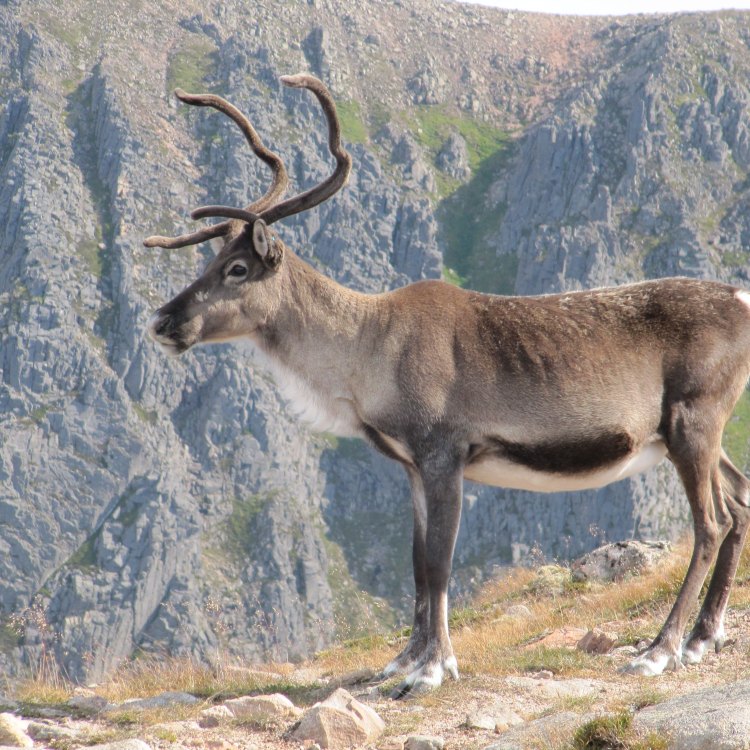
Reindeer
- Adult Size: Height at the shoulder: 0.8 to 1.2 meters, Weight: 60 to 300 kg
- Average Lifespan: 15 to 20 years
- Reproduction: Sexual
- Reproductive Behavior: Polygynous
- Sound or Call: Grunting, clicking, and whistling
- Migration Pattern: Seasonal migration
- Social Groups: Large herds
- Behavior: Adaptable, migratory, herding
- Threats: Habitat loss, climate change, predation
- Conservation Status: Least Concern
- Impact on Ecosystem: Key species in Arctic ecosystems
- Human Use: Domesticated for transportation and herding, meat and milk production, tourism
- Distinctive Features: Antlers (present in both males and females), large nose pad
- Interesting Facts: Only deer species where both males and females have antlers, known as caribou in North America
- Predator: Wolves, bears, lynx

Rangifer tarandus
The Fascinating World of Reindeer: Adaptable, Key Species of Arctic Ecosystems
The image of a sleigh being pulled by majestic reindeer is deeply ingrained in our minds as a symbol of Christmas. But beyond their festive utility, these creatures hold a significant place in the Arctic ecosystem and human society. Reindeer, also known as caribou in North America, are one of the most fascinating and unique species of deer. Let's delve deeper into the world of reindeer and uncover some of their distinctive features and behaviors PeaceOfAnimals.Com.When we think of reindeer, the first thing that may come to mind is Santa's trusty companions. But in reality, these animals have a lot more to offer. Reindeer are part of the Cervidae family, which includes deer, elk, and moose. They are native to the Arctic and subarctic regions of Europe, Asia, and North America. Let's take a closer look at some of their unique features and behaviors.
Physical Characteristics
Reindeer are medium to large-sized animals, with an average adult size of 0.8 to 1.2 meters in height at the shoulder and weighing between 60 to 300 kilograms. Their size may vary depending on their habitat and food availability Redbone Coonhound. In the harsh conditions of the Arctic, bigger reindeer have better chances of surviving, so they tend to be larger in this region.One of the most distinctive features of reindeer is their antlers. Unlike most other deer species where only males have antlers, both males and females have them in reindeer. The antlers of males are larger and have more branches than females, but both males and females use their antlers for defense and foraging. Interestingly, the antlers of reindeer are the only ones in the world to shed and regrow each year, making them a vital part of the animal's reproductive behavior.
Another unique feature of reindeer is their large nose pad, which helps them to heat the air they breathe before it reaches their lungs, making it easier for them to survive in extreme cold temperatures. This also gives them their signature red-colored nose, similar to Rudolph the red-nosed reindeer.
Migration and Social Behavior
Reindeer are highly adaptable, migratory animals, and their behavior is profoundly influenced by the changing seasons. They are the only deer species that undergo seasonal migration, traveling up to 5,000 km each year in search of food. When the winter arrives, and the ground is covered in snow, reindeer migrate to more favorable habitats where they can access food and avoid predators.Reindeer are social animals and live in large herds consisting of anywhere from a few dozen to several hundred individuals. These herds are usually led by a dominant male and consist of females, young, and other males. During the summer months, when food is abundant, herds often gather to form even larger groups of thousands of animals.
One of the most intriguing behaviors of reindeer is their mating system. They are polygynous, meaning that males will mate with several females during the breeding season. In the fall, male reindeer engage in battles using their antlers to claim dominance and mating rights. The victorious males will then mate with several females in their herd, ensuring the survival of their genes.
Threats to Reindeer
As with many other species, reindeer are facing numerous threats that endanger their survival. One of the primary threats to reindeer populations is habitat loss. Human activities, such as mining, oil and gas extraction, and road construction, are encroaching on reindeer habitats, which can lead to fragmentation and loss of essential resources.Climate change is another major threat to reindeer populations. As the Arctic warms, the changing weather patterns and resulting disruption to food availability can have a severe impact on the survival of both adults and young reindeer. In addition, reindeer are susceptible to diseases carried by parasites such as ticks, which thrive in warmer temperatures.
Predation is also a significant threat to reindeer. Wolves, bears, and lynx are their natural predators, and when their population increases, it can have a significant impact on reindeer herds. In severe cases, they can even cause local extinctions of reindeer populations.
Impact on Ecosystem and Human Use
Reindeer play a crucial role in the Arctic ecosystem, and their importance cannot be overstated. As an herbivorous species, they graze on plants, shrubs, and lichen, shaping the vegetation and influencing nutrient cycling in their habitats. They are also a key food source for their predators, playing a critical role in maintaining the balance of the food chain.The human use of reindeer dates back thousands of years and has been an essential part of the culture and economy of Arctic communities. Reindeer have been domesticated for thousands of years and are used for transportation and herding, meat and milk production, and even tourism. Their milk is highly nutritious and is used to make cheese and other dairy products, while their meat is a staple food for many indigenous communities.
Conservation Status and Interesting Facts
According to the International Union for Conservation of Nature (IUCN) Red List, reindeer are currently listed as a species of least concern. However, some subspecies, particularly in Europe, are facing population declines, and their conservation status may change in the future.Apart from their distinctive antlers and adaptation to the harsh Arctic conditions, reindeer have many other interesting facts. For instance, they are the only species of deer where both males and females grow antlers. In North America, they are known as caribou, while in Europe, Asia, and parts of North America, they are known as reindeer.
In conclusion, reindeer are truly fascinating creatures that hold a vital place in the Arctic ecosystem and have played an essential role in human societies for thousands of years. From their unique features and behaviors to their impact on the environment and human use, they truly are a remarkable and versatile species. It is essential to continue to raise awareness about the threats they face and work towards their conservation to ensure their survival for generations to come. So, next time you see a reindeer, whether it's pulling Santa's sleigh or grazing in the Arctic tundra, remember the critical role they play in our world.
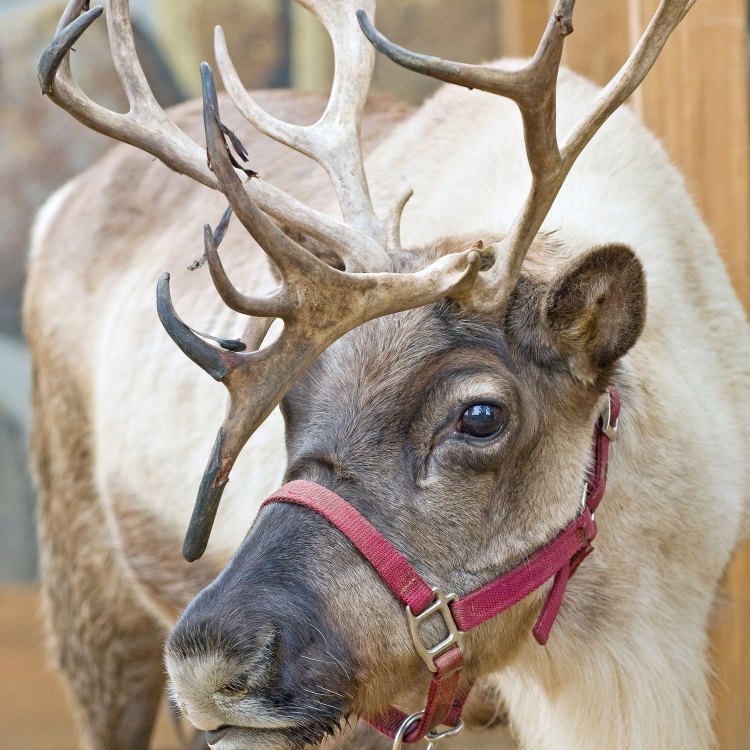
The Majestic Reindeer: A Fascinating Arctic Creature
Disclaimer: The content provided is for informational purposes only. We cannot guarantee the accuracy of the information on this page 100%. All information provided here may change without prior notice.


